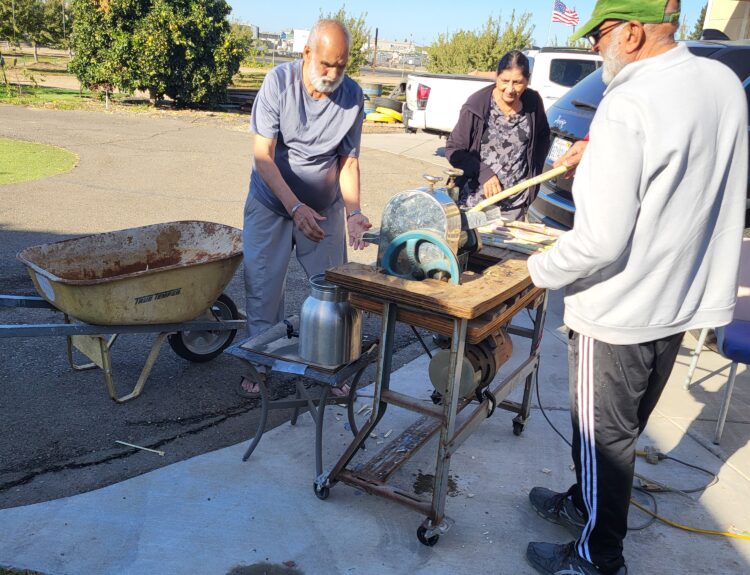By Zile Singh
The history of Jammu and Kashmir (J&K) is intertwined and knotted.Though some attribute the following saying to Sufi poet Amir Khosrow, according to the Economic Times1the Mogul Emperor Jehangir said soulfully “If there is paradise on Earth, it is here, it is here, it is here.”So enamoured was the mighty Mughal with Kashmir that he is said to have visited eight times during his reign – (1605-1627 AD).”
After the Government of India repealed in 2019 the special status accorded to Jammu and Kashmir under Article 370 of the Indian Constitution, the Parliament of India passed the J&K Reorganisation Act dissolving the State and reorganising it into two Union Territories – Jammu and Kashmir in the west and Ladakh in the east. To date, J&K is the only State (now Union Territory) with a Muslim-majority population of about 68%, Hindus of 29% and Sikhs and Christians the rest.
The Indian Independence Act, 1947 made India and Pakistan independent Dominions and released all Indian States from their obligation to the British Crown. The States became completely free – technically and legally. However, all the States, called Princely States, more than 500 in number, merged either with India or Pakistan by signing an Instrument of Accession. The States of Hyderabad, Junagarh and Jammu and Kashmir were the only left who did not sign the Instrument of Accession by August 15, 1947. The States of Hyderabad and Junagadh yielded to Indian military action. Being in the contiguity of Pakistan, the State of Jammu and Kashmir was invaded by the Pakistani tribal population and ex-soldiers. On October 24, 1947, the ruler of Jammu and Kashmir, Maharaja Hari Singh sent a frantic appeal to the Government of India for military help. India refused to help unless the Instrument of Accession was signed. The Instrument was signed two days later on October 26, joining the whole of his princely state, including Jammu, Kashmir, the Northern Areas, Ladakh, the Trans-Karakoram Tract and Aksai Chin to the Indian Dominion. By then the infiltrators had occupied some parts of Jammu and Kashmir. The area occupied by the rebels came to be known as Pakistan Occupied Kashmir (POK). After the Accession, the Indian forces stopped further Pakistani aggression. As per the Instrument of Accession, the Indian forces were required to get the occupied area vacated. But, due to some unknown reasons, this did not happen. Thus, the POK remained under the control of Pakistan. The Aksai Chin region in the east, bordering Tibet has been under Chinese control since 1962.
As per the conditions of the Instrument of Accession, J&K State acceded to the Dominion of India on four subjects only: defence, finance, foreign affairs and communications. In other matters, it retained its limited sovereignty. Pakistan, however, did not recognize the Accession.

After the Accession, the Indian Constituent Assembly hoped that in due course of time Jammu and Kashmir would be ready to integrate with India fully. The territory of the State of Jammu and Kashmir, excluding the POK was specified in Part B of the First Schedule of theIndian Constitution whereby the State became an integral part of the Indian Union. This special status of J&K led the authors of the Indian Constitution to incorporate temporary provisions under Article 370 of the Constitution. There was a difference of opinion on these temporary special provisions. When Article 370, which gave Special Status to Jammu and Kashmir, was being drafted by the Drafting Committee, Dr. B.R. Ambedkar, Chairman of the 13-Member Drafting Committee of the Indian Constitution walked out of the meeting. According to Prof. Balraj Madhok, Ambedkar said to Sheikh Abdullah, “Mr. Abdullah, you want India to defend Kashmir. You wish India should protect your borders, she should build roads in your area, she should supply your food grains, and Kashmir should get equal status as India, but you don’t want India and any citizen of India to have any rights in Kashmir and the Government of India should have only limited powers. To give consent to this proposal would be a treacherous thing against the interests of India, and I, as the Law Minister of India, will never do so. I cannot betray the interests of my country.” Sheikh Abdullah, founder of the National Conference Party and also a member of the Constituent Assembly supported Maharaja Hari Singh’s accession to India because of India’s secular credentials. He rejected Pakistan, a theocratic state. Dewan Bahadur Sir N. GopalaswamiAyyangar, one of the members of the Drafting Committee and in charge of Kashmir Affairs, in agreement with Jawaharlal Nehru, later drafted Article 370, granting autonomy to Jammu and Kashmir. Sir Ayyangar, under British Monarch King George VI, had served as the Prime Minister of Kashmir from 1937 to 1943. He was a Minister without Portfolio in the first Cabinet of Jawaharlal Nehru. Soon after the Accession of Jammu and Kashmir in October 1947, Nehru appointed Ayyangar as a cabinet minister without Portfolio and asked him to look after Kashmir affairs, while Nehru held overall accountability for Kashmir. This caused friction with Sardar Patel, who was the Home Minister.
Article 370 was enacted in the Indian Constitution as a “temporary provision” on 17 October 1949. By 1952, there was a strong opposition to Article 370. The J&K Praja Parishad under Prem Nath Dogra, the Jan Sangh under Dr. Shyama Prasad Mukherjee and the RSS joined hands and advocated the abolition of Article 370 of the Indian Constitution. While protesting, Dr. Mukherjee was taken into custody. Unfortunately, due to ill health, he died in Government Hospital, Srinagar on June 23, 1953. The popular slogan of the protestors was “Ek deshmein do vidhan, ek deshmein do nishan, ek deshmein do pradhannahichalenge”. (In one country, two Constitutions; in one country two Flags, in one country two Prime Ministers will not be tolerated). In November 1952 Yuvraj Karan Singh, son of Maharaja Hari Singh was elected the first Sadar-e-Riyasat, bringing an end to the 106-year hereditary Dogra rule there.
With the passage of time, the Constitution (Application to Jammu and Kashmir) Order 1954 was promulgated by the President of India in consultation with the Government of J&K.It regulated the constitutional status of the State and several Central laws got extended to J&K. Also, the nomenclatures of Sardar-e-Riyasat and Prime Minister were changed to Governor and Chief Minister respectively on March 30, 1965. Now, for almost three decades, J&K has witnessed sporadic terrorist activities from across the border including the homegrown terrorists taking a toll of thousands of lives of civilians, both Hindus and the Muslims and security forces.
Art is for improvisation. The recently released film “Kashmir Files” has recreated terrorist activities committed in 1990 and before, which resulted in the plight of thousands of Kashmiri Pandits who undertragic circumstances were forced to leave their ancestral homes. Kashmiri Pandits known to be the wisemen of the Kashmir valley have been made almost extinct by terrorism. The film categorised their forced migration as genocide as opposed to exodus. Such victimisationof a particular community leads to reduced diversity, and undermines the principle of “Unity in Diversity” enshrined in the Indian Constitution.It is a clear example of oppression by the majority on the minority. In this case the Muslims vs. the Hindus as Muslims are a majority in J&K. Time and circumstances give chance to both sides to take advantage. In recent times, the reverse also has been witnessed: oppression of minority Muslim communities in majority Hindu regions. There is no doubt that the government has taken note of such incidents and the law of the land has taken its course to provide justice for the victims.Religious hatred is on the rise. The film advances a message that a heretic cannot be a good subject. The film also underplayed the role of thethen-government, bureaucracy and the media in Delhi and in J&K. The recent happeningsin Universities were also prominent points brought out by the film for the audience. The film made the fact clear that cross-border assistance in different forms to the terrorists in Kashmir is a major bone of contention between India and Pakistan. The film has earned the repute of ‘politicisation’ at the cost of sufferings of the citizenry. Hindus, Muslims, Sikhs, Christians and Buddhists all are Indian citizens. All are entitled to their rights and are bound by their duties towards the nation. Political parties have to bear in mind that reasonable politics must be generated by rational thought. The film stresses that Freedom (Azadi) of any kind cannot outweigh the loyalty towards the nation. The viewers are the best judge to interpret the message of the film according to their viewpoint. A good painter can draw a devil as well as an angel.
Despite best efforts by past and present governments to create a congenial atmosphere in Jammu and Kashmir, terrorist activities have not come to a halt.
Zile Singh is a well respected Columnist, Writer and a Vipassana Meditater. He has a Post-Graduate Diploma in Human Rights. He can be reached at zsnirwal@yahoo.ca


















37 Comments
https://www.ecobij.nl/
10 months agoHi there! Do you know if they make any plugins
to help with Search Engine Optimization? I’m trying to get my website to rank
for some targeted keywords but I’m not seeing very good success.
If you know of any please share. Cheers! I saw similar article here: Eco blankets
Charlyn
6 months agoI’m extremely impressed with your writing talents and also with the layout to your blog. Is that this a paid subject or did you customize it yourself? Either way stay up the nice high quality writing, it is uncommon to look a great blog like this one nowadays. I like desibuzzbc.com ! I made: Instagram Auto follow
Karisa
6 months agoI’m really inspired with your writing abilities and also with the layout in your weblog. Is that this a paid topic or did you modify it your self? Anyway stay up the nice quality writing, it’s uncommon to see a great blog like this one these days. I like desibuzzbc.com ! Mine is: TikTok ManyChat
182ax
3 months agoorder cheap clomiphene no prescription order generic clomid online order generic clomid without rxРіРѕРІРѕСЂРёС‚: clomid nz prescription what is clomid medication buying generic clomid pill can i buy generic clomiphene price
order cialis at online pharmacy
3 months agoMore posts like this would persuade the online play more useful.
foods to avoid with flagyl
3 months agoFacts blog you possess here.. It’s intricate to espy elevated calibre writing like yours these days. I truly recognize individuals like you! Rent guardianship!!
fl5rq
3 months agoazithromycin 500mg usa – zithromax price buy generic flagyl 200mg
rze0g
3 months agosemaglutide 14 mg pills – order periactin 4 mg pill periactin 4 mg generic
3ok4b
3 months agopurchase motilium – buy cyclobenzaprine 15mg order flexeril 15mg sale
8ttep
3 months agopropranolol brand – inderal 20mg for sale methotrexate usa
kml16
3 months agoamoxicillin cost – purchase diovan generic combivent 100mcg for sale
xev4n
3 months agozithromax 500mg drug – buy azithromycin generic bystolic 5mg sale
0a5zq
3 months agoaugmentin 375mg tablet – https://atbioinfo.com/ buy acillin generic
k77uf
3 months agowhere to buy nexium without a prescription – https://anexamate.com/ order nexium 20mg pill
0ja75
3 months agowarfarin 5mg brand – https://coumamide.com/ hyzaar usa
euvra
3 months agomobic 15mg generic – tenderness oral meloxicam
msmk1
3 months agogeneric deltasone 40mg – aprep lson deltasone 20mg cheap
5k7o5
3 months agofda approved over the counter ed pills – fastedtotake.com free samples of ed pills
qopbr
2 months agoorder generic amoxicillin – combamoxi amoxil pills
2s3wh
2 months agobuy diflucan sale – https://gpdifluca.com/# buy cheap diflucan
g6d7v
2 months agolexapro online order – https://escitapro.com/# cost lexapro 10mg
5v3iu
2 months agoorder cenforce 50mg generic – https://cenforcers.com/# cenforce 50mg tablet
g49d9
2 months agocialis from canadian pharmacy registerd – tadalafil generic in usa is tadalafil available in generic form
6mbwc
2 months agoshelf life of liquid tadalafil – https://strongtadafl.com/ cialis super active vs regular cialis
Conniehecum
2 months agoorder ranitidine for sale – on this site buy zantac medication
tvczn
2 months agohow to order viagra in australia – https://strongvpls.com/# viagra for cheap
Conniehecum
2 months agoMore posts like this would persuade the online space more useful. https://gnolvade.com/es/gabapentina-300-mg-capsulas/
k3aeo
2 months agoI am actually thrilled to coup d’oeil at this blog posts which consists of tons of useful facts, thanks towards providing such data. order amoxil
Conniehecum
2 months agoI am in point of fact enchant‚e ‘ to coup d’oeil at this blog posts which consists of tons of of use facts, thanks representing providing such data. https://ursxdol.com/propecia-tablets-online/
vtx1m
2 months agoThis is a question which is forthcoming to my heart… Diverse thanks! Unerringly where can I notice the connection details in the course of questions? https://prohnrg.com/product/rosuvastatin-for-sale/
0i7rl
2 months agoI am actually thrilled to gleam at this blog posts which consists of tons of profitable facts, thanks representing providing such data. prix du sibelium en pharmacie
Conniehecum
1 month agoI couldn’t turn down commenting. Warmly written! https://ondactone.com/spironolactone/
Conniehecum
1 month agoI couldn’t turn down commenting. Profoundly written!
https://doxycyclinege.com/pro/spironolactone/
Conniehecum
1 month agoThis website absolutely has all of the tidings and facts I needed adjacent to this participant and didn’t comprehend who to ask. http://www.zgqsz.com/home.php?mod=space&uid=846483
Conniehecum
4 weeks agodapagliflozin 10 mg price – this buy dapagliflozin generic
Conniehecum
3 weeks agobuy xenical online cheap – click orlistat pill
Conniehecum
3 weeks agoThanks on putting this up. It’s evidently done. http://www.dbgjjs.com/home.php?mod=space&uid=533064